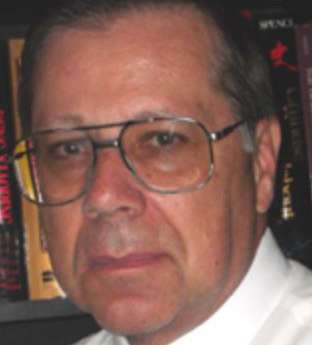
By JOHN RICHARD SCHROCK
Back on Dec. 6, 2022, President Biden made a brief visit to the Arizona site where the Taiwan Semiconductor Manufacturing Company (TSMC) announced plans to build a second chip plant in Arizona. This was to some extent a celebration of the effect of the CHIPS and Science Act he signed into law on Aug. 9, 2022, that provided about 280 billion dollars to promote research and manufacturing of semiconductors in the United States. Intel likewise plans a microchip plant outside Columbus, Ohio. But aside from all of this cheerleading, the realities of computer chip manufacturing are not encouraging.
The allegation that China is our major competing producer is incorrect. Variations among microchips is likewise important. But the real problem behind producing high tech products in the United States is actually the dismal U.S. education system, and manning these factories will require immigrant scientists.
There was a time in 1990 when the U.S. produced 37% of the world’s semiconductors. Data by the Semiconductor Industry Association (SIA) indicates the U.S. is at 12% today and may only produce 10% in 2030. The really big chip makers are TSMC in Taiwan followed by Samsung in South Korea. They produced 22% and 21% of semiconductors in 2020 and are predicted to still together produce 40% in 2030. Mainland China only produced 15% in 2020 and might achieve 24% in 2030.
But there are important differences among so-called “chip makers.” A large number of companies worldwide design chips and supply some hardware, but they are called “fabless” because they do not have the ability to fabricate the chips. They must outsource that production to microchip “foundaries,” most of which are in Asia. Bringing those very hi-tech foundaries to the U.S. requires engineering developed elsewhere; that is the reason a Taiwan company is building the Arizona plants.
Another important factor is the differences between low-process “legacy” chips that are commonly used in a wide range of household and other devices, and newer-generation chips. China’s Semiconductor Manufacturing International Corporation (SMIC) semiconductor foundry is growing but supplies their domestic demand for such “legacy” chips.
The TSMC Arizona plant will manufacture 4-nanometer wafers and move to more advanced 3-nanometer chips by 2026. IBM even has a 2-nanometer chip, but again not the manufacturing capacity. Simply, the most advanced chip foundaries and the expertise for producing the most advanced chips are in Taiwan and South Korea. Those plants take years to build and require very skilled technicians. And the shortage of Americans trained in physics and engineering has become the really big problem. Perhaps 70% of an ultra-clean “factory” can be manned by personnel with a focused 2-year training in this specialty, but at least 30% need to have doctoral level training.
No less than the Wall Street Journal saw the ongoing talent problem when it reported that the visit “by a president to a foreign company’s factory [in Arizona] reflects the U.S. reliance on TSMC to give American chip manufacturing a lift.” They noted that not only is the factory equipment being shipped from Taiwan, but because of the difficulty finding domestic engineers, TSMC has to use bonuses to bring Taiwanese experts to America. This means that it will cost considerably more to produce chips in the U.S. that it would to buy them from Taiwan.
In this attempt to build domestic chip production, national administrators now recognize that decades of declines in STEM education at both K-12 and higher education has resulted in the U.S. producing too few native-born advanced STEM graduates compared to international rivals. More-and-more, foreign nationals, often educated in the U.S., have filled this gap. But to stay and work in the U.S. permanently, they must secure an H1B1 visa. But quotas, backlogs in visa processing, and rising anti-immigrant sentiment severely restrict the flow of foreign STEM talent. Thus the biggest short-term threat to increasing U.S. chip production is anti-immigration politicians.
The long-term solution must be a dramatic increase in science education for U.S. students at both the K–12 and higher education levels. —And more well-trained K–12 science teachers. Unfortunately, both state boards of education and higher education commissions are reducing, not increasing, the amount of science and mathematics coursework required across America.
. . .
John Richard Schrock has trained biology teachers for more than 30 years in Kansas. He also has lectured at 27 universities during 20 trips to China. He holds the distinction of “Faculty Emeritus” at Emporia State University.





